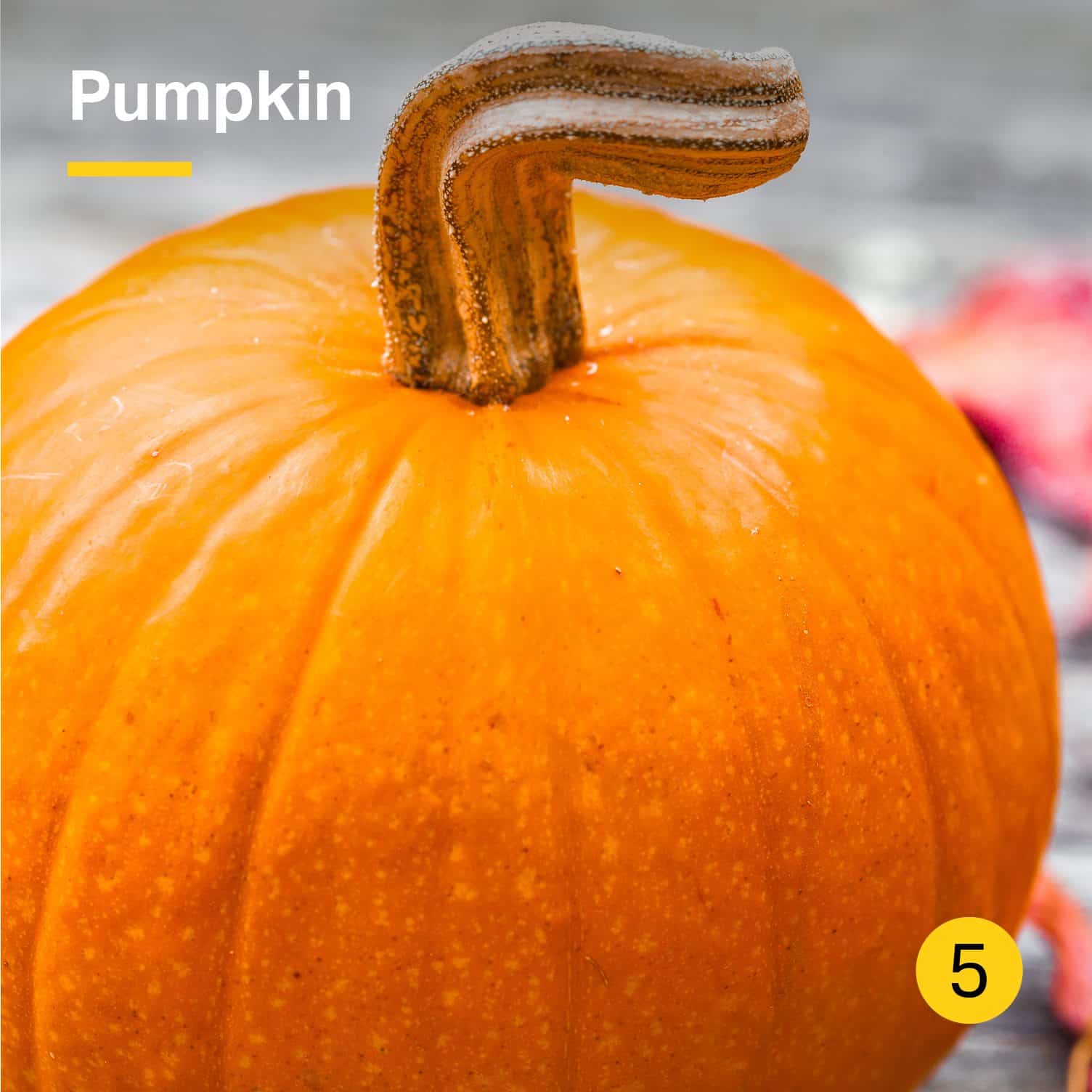This is the ideal time of year to explore the many delicious benefits of squash. These low-carb, low-calorie gourds have natural sweetness and great nutrition. They’re packed with antioxidants, vitamins A and C, potassium, manganese, folate, and contain some omega-3 fatty acids and varying levels of B vitamins. Richly satisfying, a serving of butternut squash, for example, has approximately half the calories and much lower sugar counts than a serving of sweet potatoes.
All you need is a sharp knife and a great recipe to become a fan of squash. Here we (subjectively) rank 7 squashes based on taste, versatility and ease of use:

With skin that’s edible and full of fiber, this Japanese squash is our #1 favorite. With a dark green exterior overlaid with lighter green stripes, it has a squat shape, is a manageable size of 2–3 pounds and keeps well on the counter. The pale orange dense flesh has a smooth texture and flavor that runs from mild to sweet. Try it in soups or cut it into wedges, roast and add to a cold weather salad with crumbled feta, pomegranate seeds and toasted pine nuts.

This smooth, red-orange teardrop-shaped beauty gets the award for trendiest squash. It’s also known as Japanese squash, orange Hokkaido squash and baby red Hubbard. The mild, not-too-sweet flavor has a nutty quality when roasted and tastes delicious in salads. Try it with a wintry mix of kale, dried cranberries and shaved parm—or in silky soup enriched with ginger and coconut milk. The only caveat is that it can be harder to find in markets.

Elongated and pale yellow with green pinstripes, this squash is usually 1–2 pounds making it perfectly sized for two portions. The skin is edible, and the fine-textured, creamy flesh is mild and comparable to butternut squash. It’s especially good roasted; however, it doesn’t keep especially well, so pick it up just a few days before cooking.
READ MORE > SPAGHETTI SQUASH 5 WAYS

The super smooth beige skin peels away easily, which makes this popular squash simple to work with. Whether long-necked or short and squat, butternut squash has a deep orange flesh with a sweet, slightly nutty flavor that works well in recipes from soup or risotto. Recipes that call for steaming don’t make the most of its flavor; if you’ve found it bland in the past, roast it first to bring out a richness of taste.

For sheer versatility, this gourd has got the goods. The dense flesh has a mild, versatile flavor that’s tasty whether steamed or roasted, then pureed, to enrich everything from baked goods to soups. When it comes to cooking, look for smaller gourds in the 2–8 pound range, since those big Halloween-type ones can taste watery.

With a cute name, round shape and colorful exterior that runs from dark green to orange and gold, this squash is perhaps more popular than it deserves. Despite its appealing look, the flesh can be noticeably fibrous and lacks complex flavors. Even roasted with butter and brown sugar, the taste generally runs from fine to meh; stuffing it with a filling of apples, currants and nuts is another popular cooking method.

With a massive size that can balloon up to 20 pounds, hard and warty skin, and colors that range from orange to grayish blue, this is a squash you don’t want to meet in a dark alley. But for the right occasion, it’s worth the effort. (You can also buy pre-cut wedges at the store.) The deep orange flesh is sweet and rich, if sometimes a bit mealy. It’s a great choice for mashes or purees (even pie) and lasts long on the counter, sometimes up to 6 months.




